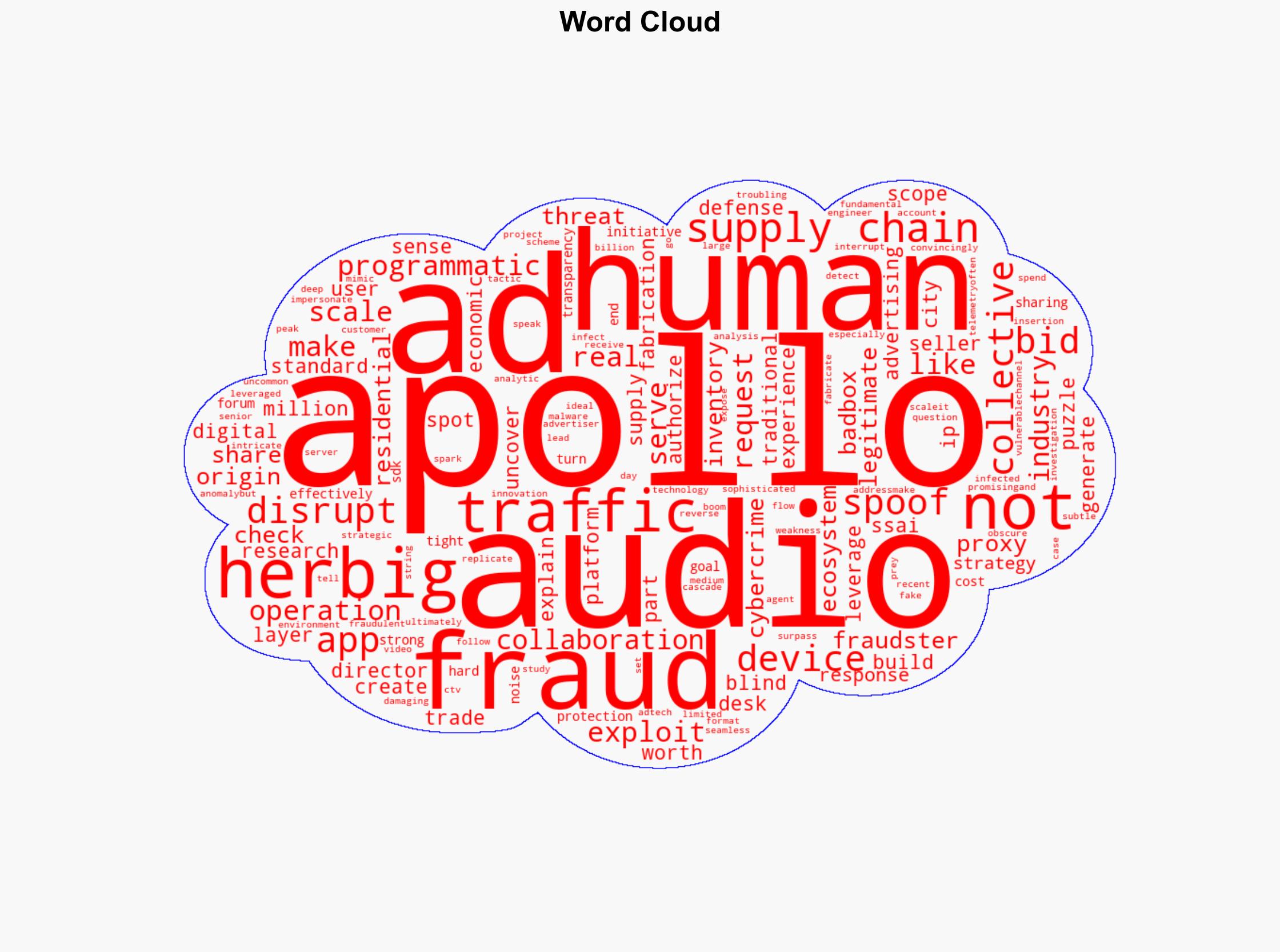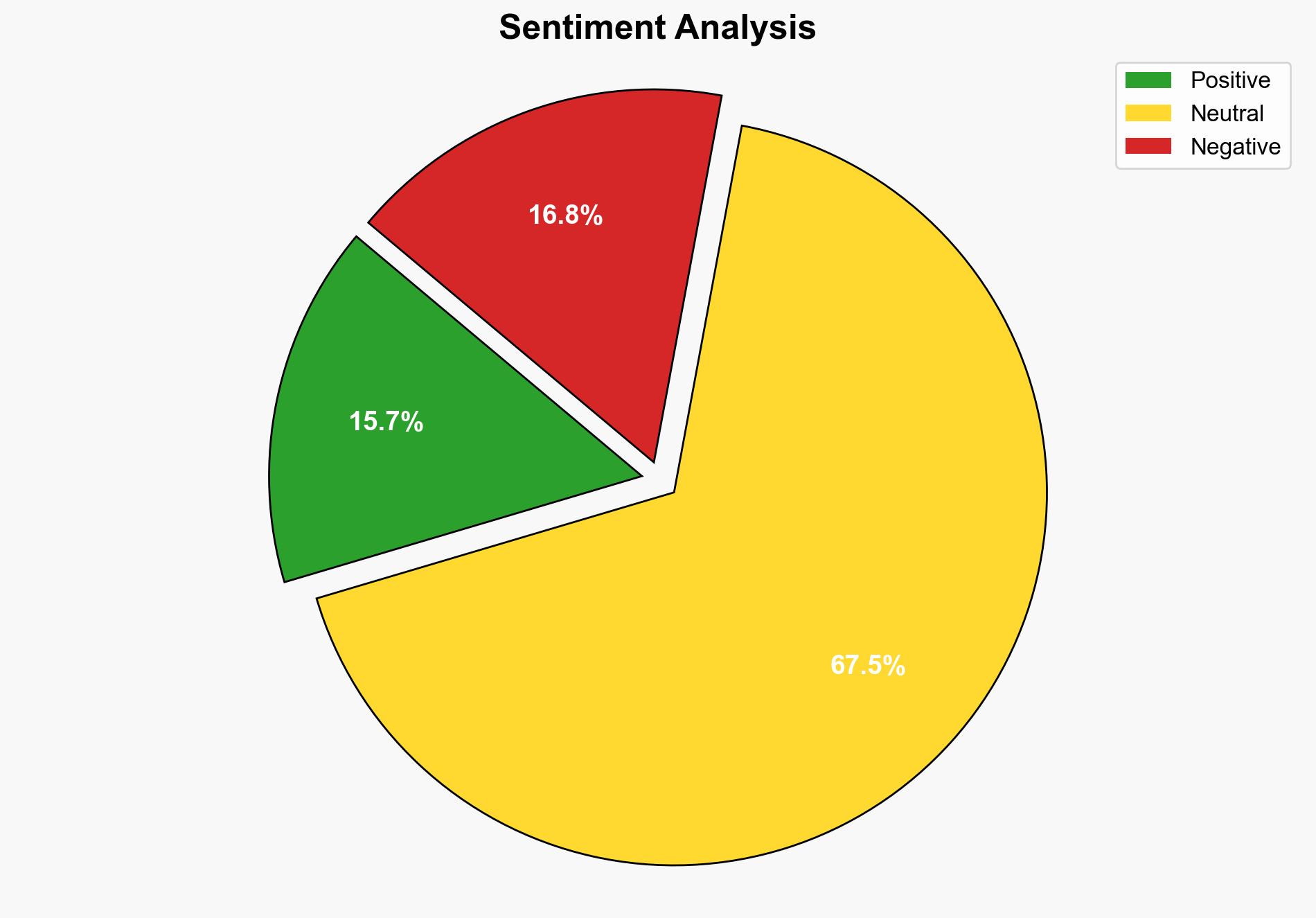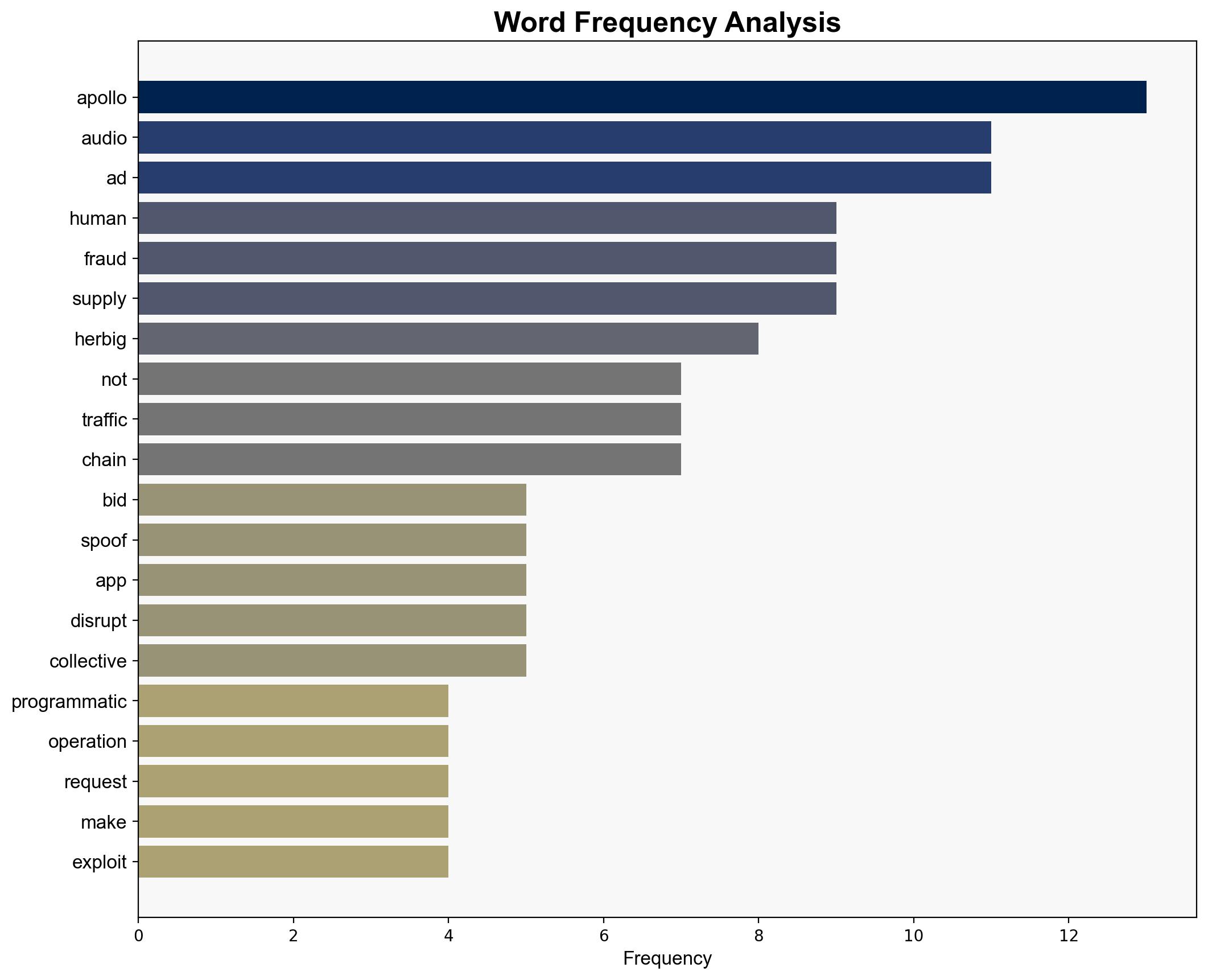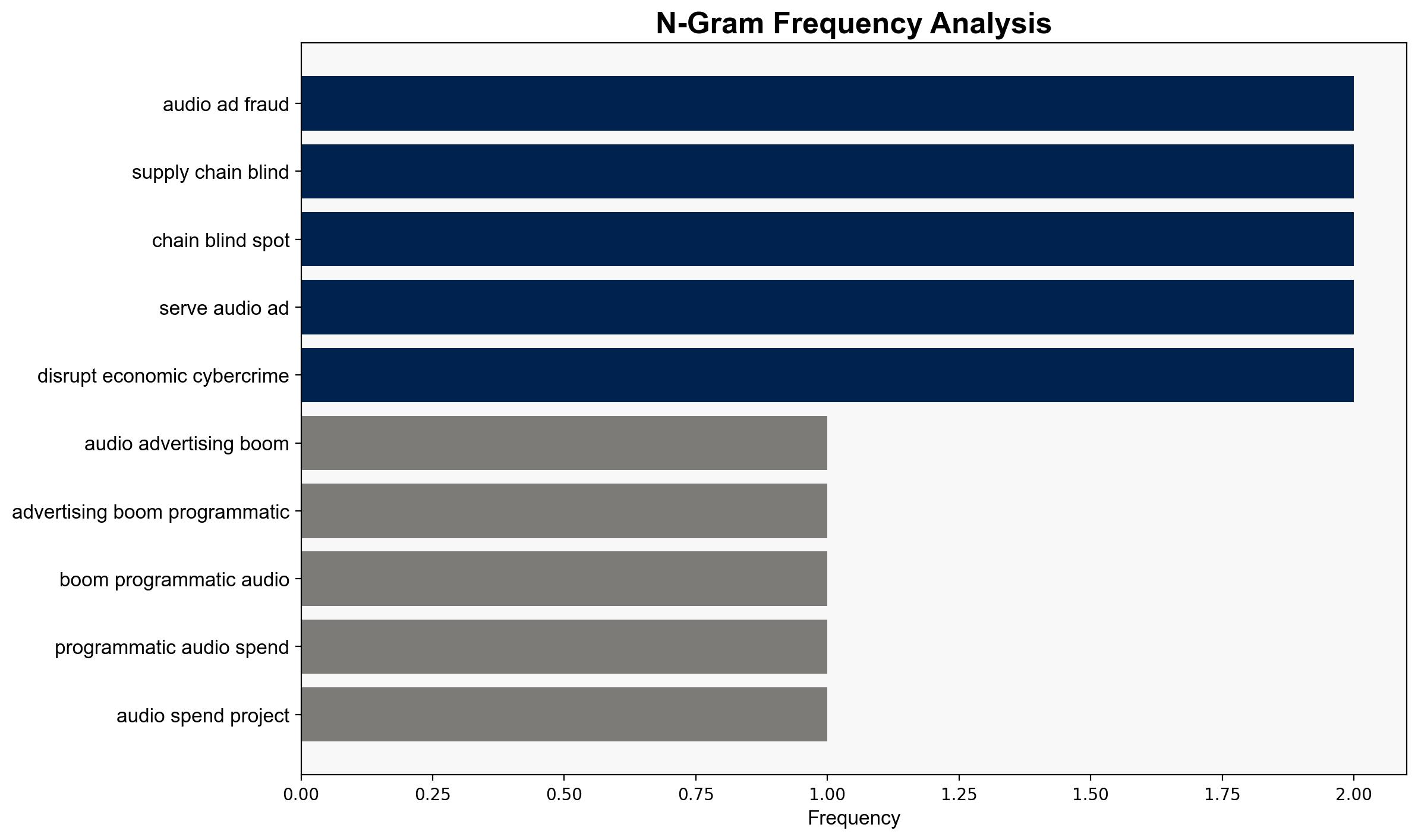Apollo Exposed What 400M Fake Ad Requests Reveal About Fraud – Forbes
Published on: 2025-04-17
Intelligence Report: Apollo Exposed What 400M Fake Ad Requests Reveal About Fraud – Forbes
1. BLUF (Bottom Line Up Front)
The Apollo operation represents the largest audio-related ad fraud scheme detected, generating 400 million fraudulent bid requests daily. This scheme exploited server-side ad insertion (SSAI) vulnerabilities, mimicked legitimate traffic, and leveraged malware-infected connected TV devices. The operation highlights significant blind spots in the programmatic advertising supply chain, necessitating immediate strategic action to bolster cybersecurity defenses.
2. Detailed Analysis
The following structured analytic techniques have been applied:
Analysis of Competing Hypotheses (ACH)
The Apollo scheme likely emerged due to the lucrative nature of programmatic audio advertising and the inherent vulnerabilities in SSAI technology. Fraudsters exploited these weaknesses to maximize financial gain while minimizing detection risk.
SWOT Analysis
Strengths: Rapid detection and analysis by cybersecurity firms like HUMAN.
Weaknesses: Limited telemetry in SSAI environments and reliance on residential proxies.
Opportunities: Development of more robust SSAI security protocols and enhanced monitoring systems.
Threats: Increasing sophistication of fraud schemes and potential financial losses for advertisers.
Indicators Development
Warning signs include unusual ad requests from non-audio apps, traffic patterns resembling those of mid-sized cities, and increased use of residential proxies to obscure data origins.
3. Implications and Strategic Risks
The Apollo scheme underscores vulnerabilities in digital advertising, posing risks to financial stability and trust in programmatic advertising. The operation’s scale and sophistication suggest potential for similar future attacks, threatening economic interests and cybersecurity integrity.
4. Recommendations and Outlook
- Enhance SSAI security by developing comprehensive telemetry and monitoring systems to detect anomalies.
- Implement stricter verification processes for ad requests to prevent spoofing.
- Invest in research to identify and mitigate emerging threats in digital advertising.
- Scenario-based projection: If current vulnerabilities persist, expect a rise in similar fraud operations, potentially leading to increased financial losses and diminished advertiser confidence.
5. Key Individuals and Entities
Will Herbig




